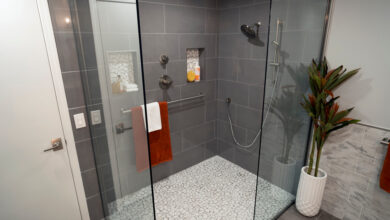7 Tips for Designing Child-Friendly Accessible Bathrooms
By Anne Marie Gerhardt
Designing a bathroom that is both accessible and stylish, especially for children and teens with mobility challenges, requires a thoughtful balance of functionality, space maximization and inclusivity.
This is one of the missions of Sunshine on a Ranney Day, a nonprofit based outside of Atlanta, Georgia, which reimagines and builds custom rooms for children with special needs at no cost to their families. The organization won The National Association of the Remodeling Industry’s 2024 National Contractor of the Year Award for Universal Design for its bathroom remodel for two middle-school-aged brothers, one of whom uses a wheelchair.
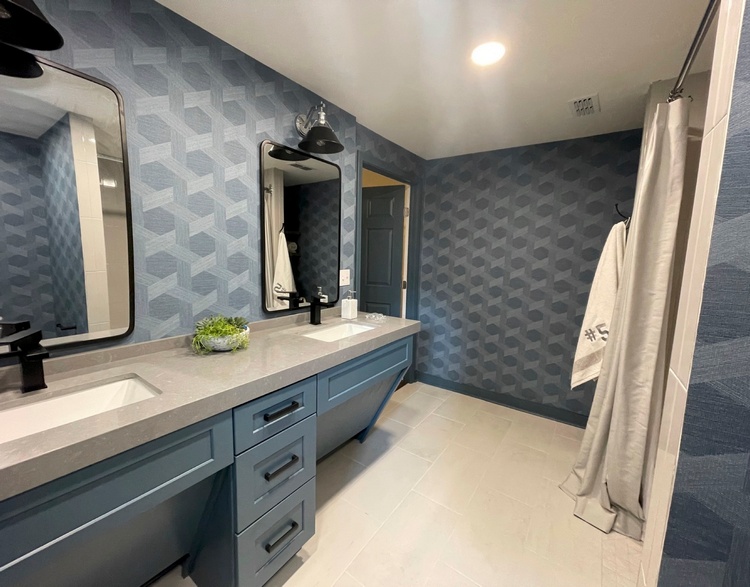 The winning design created space that meets both boys’ needs, while maintaining a youthful and sophisticated environment. The bathroom featured blue argyle walls and dark fixtures, ensuring the space could grow with the boys as they transition into adulthood.
The winning design created space that meets both boys’ needs, while maintaining a youthful and sophisticated environment. The bathroom featured blue argyle walls and dark fixtures, ensuring the space could grow with the boys as they transition into adulthood.
Sunshine on a Ranney Day Executive Director Joe Lane says thinking about every detail of a family’s bathroom routine, while considering the specific needs of the child, is important for remodeling projects. He shares the following general accessibility solutions to create a safe and suitable bathroom for everyone to use:
1. Incorporate curbless showers
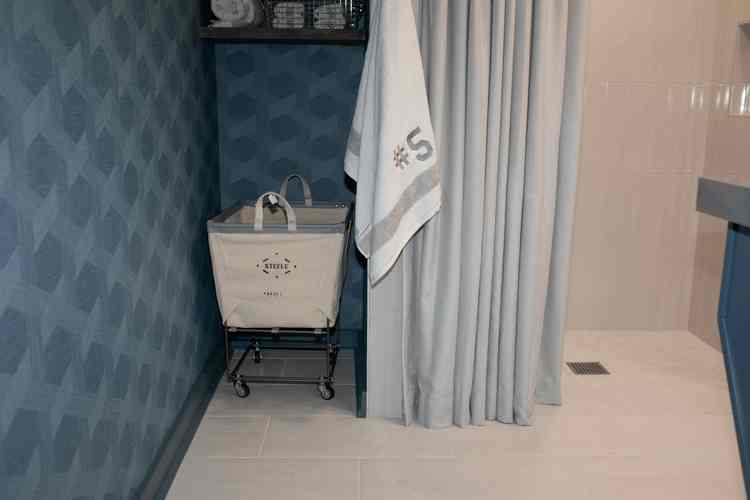 A true curbless shower is one of the most crucial features of an accessible bathroom. “It requires the framing or slab to be recessed to allow the preformed pan to sit level with the surrounding floor for a truly zero-entry shower,” Lane says. “This design eliminates barriers for wheelchair users or someone unable to step into a tub, providing a smooth transition between the bathroom floor and shower.” He adds that completely waterproofing the bathroom can also help prevent water leakage and create a worry-free, wet room environment.
A true curbless shower is one of the most crucial features of an accessible bathroom. “It requires the framing or slab to be recessed to allow the preformed pan to sit level with the surrounding floor for a truly zero-entry shower,” Lane says. “This design eliminates barriers for wheelchair users or someone unable to step into a tub, providing a smooth transition between the bathroom floor and shower.” He adds that completely waterproofing the bathroom can also help prevent water leakage and create a worry-free, wet room environment.
2. Install grab bars
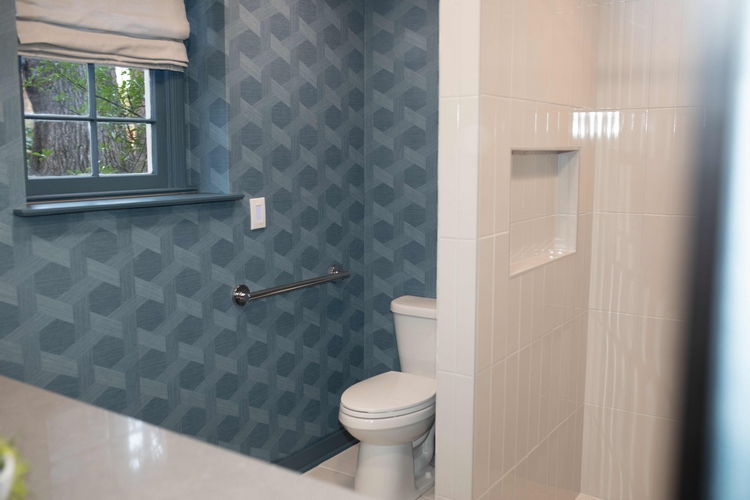 Grab bars in the shower and around the toilet are another important feature, says Lane. “These provide stability and support for children who can transfer independently and for caregivers assisting their child,” he adds. Properly placed grab bars enable safe and easy mobility throughout the bathroom.
Grab bars in the shower and around the toilet are another important feature, says Lane. “These provide stability and support for children who can transfer independently and for caregivers assisting their child,” he adds. Properly placed grab bars enable safe and easy mobility throughout the bathroom.
3. Utilize wheelchair accessible vanities
Creating a wheelchair-accessible vanity with roll-under sink space ensures that anyone using a wheelchair can comfortably reach the sink. Additional storage options like drawer banks or cabinetry can be included elsewhere in the bathroom to accommodate other family members. This could be a drawer bank next to the roll-under sink, additional cabinetry above the toilet or on another bathroom wall, a medicine cabinet behind the vanity mirror or additional niches, Lane suggests.
4. Maximize space by reconfiguring layouts
Secondary bathrooms often lack the space necessary for accessible features. Consider removing linen closets, borrowing space from adjoining rooms or utilizing hallways to expand the bathroom footprint, Lane suggests. “We generally do our best to make all bathroom doors at least three feet wide to facilitate easier wheelchair access.” In addition, if there’s room, Lane suggests positioning the toilet with sufficient space on both sides to allow for ease of transfer from a wheelchair or with caregiver assistance. This enhances overall accessibility and makes daily routines more manageable.
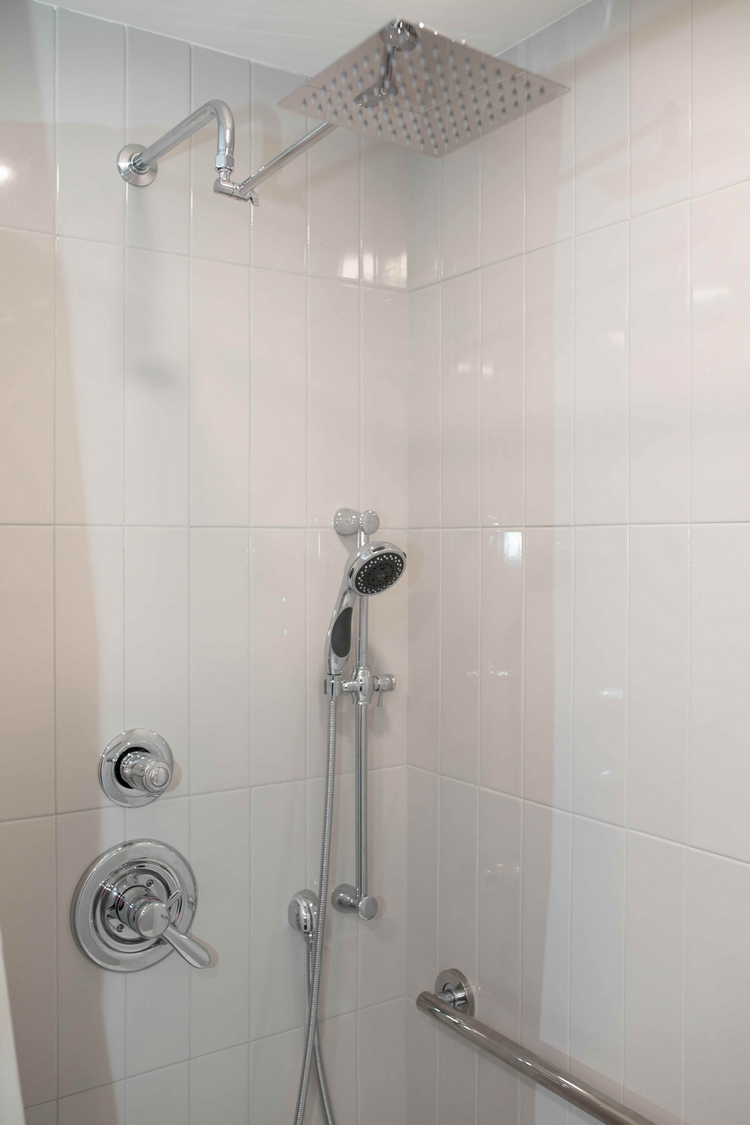 5. Consider shower benches
5. Consider shower benches
Lane recommends wall-mounted shower benches. “They are an excellent addition for children who have some mobility but cannot stand for extended periods. These can be paired with handheld showerheads attached to sliding grab bars, allowing kids to wash themselves or making it easier for caregivers to assist.”
6. Encourage independence with lighting and technology
Newer accessibility trends include voice-activated lighting and fans, which can provide children with physical limitations a greater level of independence. Adding a bit of fun, Lane says installing Bluetooth-enabled bath fans allows children and parents to connect their devices and enjoy music during bathroom routines
7. Make it stylish
Accessibility doesn’t have to compromise style. Many families prefer accessible features that blend seamlessly into a custom, beautiful bathroom design. Some trends Lane incorporates into his designs include accent tiles in shower niches, waterproof vinyl wallpaper, curved shower entries and towers added to vanities that can enhance visual appeal without sacrificing functionality. Durable, high-quality materials also ensure the bathroom remains practical and attractive.
In the end, creating an accessible bathroom for children and teens requires careful planning to ensure mobility, safety and style. By focusing on practical features and aesthetic design elements, a bathroom can be both functional and beautiful for all family members.
Photos courtesy of Sunshine on a Ranney Day
Anne Marie Gerhardt is communications manager at The National Association of the Remodeling Industry.


